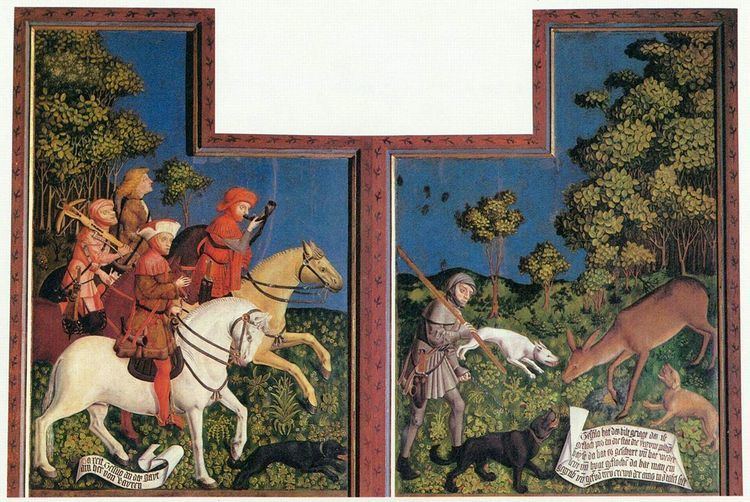Name Tassilo Duke Grandparents Charles Martel | Children Theodo III. | |
 | ||
Parents Hiltrud, Odilo, Duke of Bavaria | ||
Great-grandparents Pepin of Herstal, Alpaida | ||
Tassilo III (c. 741 – c. 796) was the duke of Bavaria from 748 to 788, the last of the house of the Agilolfings.
Tassilo, then still a child, began his rule as a Frankish ward under the tutelage of his uncle, the Carolingian Mayor of the Palace Pepin the Short (later king) after Tassilo's father, Duke Odilo of Bavaria, had died in 748 and Pepin’s half-brother Grifo had tried to seize the duchy for himself. Pepin removed Grifo and installed the young Tassilo as duke, but under Frankish overlordship.
Later, in 757, according to the Royal Frankish Annals, Tassilo became Pepin’s vassal and the lord for his lands at an assembly held at Compiegne. There he is reported to have sworn numerous oaths to Pepin and, according to reports which may have been written much later, promised fealty to him and his sons, Charles and Carloman. However, this highly legalistic account is quite out of character for the period; K. L. Pearson has suggested that it probably represents a reworking of the original document by the annalist to emphasise Charlemagne’s overlordship over Tassilo during the period of hostilities between the two rulers.
Around 760 Tassilo married Liutperga, daughter of the Lombard king Desiderius continuing a tradition of Lombardo-Bavarian connections. He made several journeys to Italy to visit his father in law and to establish political relations with the pope. It is reported that Tassilo had gained such a reputation that he was regarded as a kingly ruler when his cousins Charles and Carloman assumed power in the Frankish realm in 768. That year he founded Gars Abbey on the Inn River in southern Bavaria. He was however not able to protect the pope against Lombard expansions which has been seen as a reason for Rome's lack of supporting Tassilo in his later conflict with Charlemagne. Still, there is consensus among historians that Tassilo despite his acting as a kingly sovereign did not intend to become king himself.
From the Frankish point of view, in 763 Tassilo defaulted on his military obligations to Pepin, leaving the Frankish campaign in Aquitaine on grounds of ill health. Pearson suggests that he left out of a feeling of obligation to the Aquitanians in light of an earlier alliance made between Tassilo’s father and the Aquitanian duke during his conflict with Pepin in 743. Whatever the motivations behind Tassilo's abandoning the campaign, the Royal Frankish Annals for that year are particularly scathing of him, saying that he "brushed aside his oaths and all his promises and sneaked away on a wicked pretext". Working on the premise, argued by Pearson, that these annals may have been revised to emphasise Tassilo as a vassal suggests that this was the beginning of a campaign to depict Tassilo as an oath-breaker and as one unprepared to carry out the main function of his office, namely, to fight, making him unfit for rule.
This incident was the linchpin in Charlemagne and Pope Hadrian I’s argument that Tassilo was not an independent prince, but a rebellious vassal deserving punishment. This punishment was carried out, after much political maneuvering during a diet in the Imperial Palace Ingelheim, in 788, when Tassilo was finally deposed and entered a monastery. In 794, Tassilo was again compelled, at the synod of Frankfurt, to renounce his and his family's claims to Bavaria. He formally handed over to the king all of the rights he had held.
